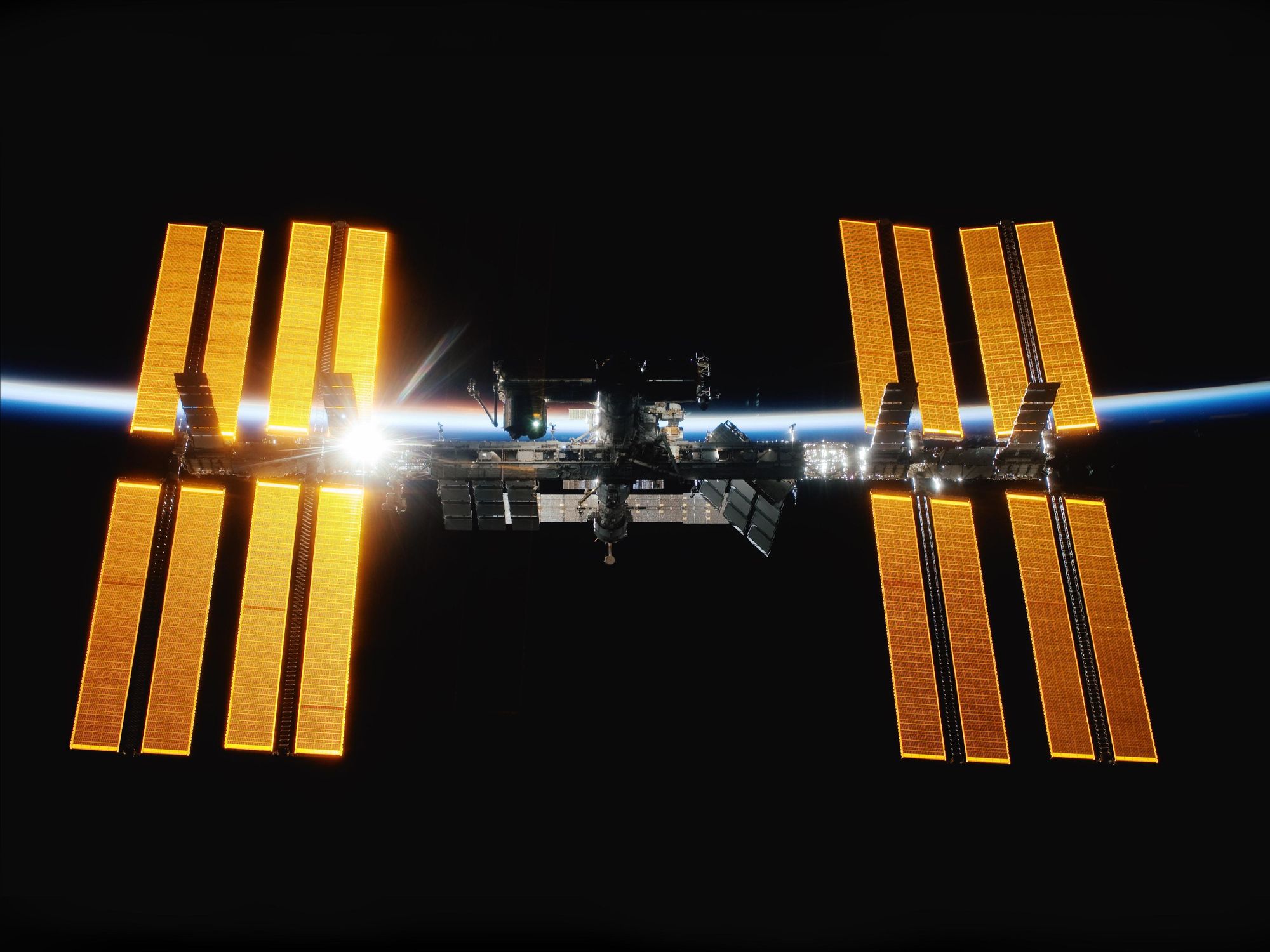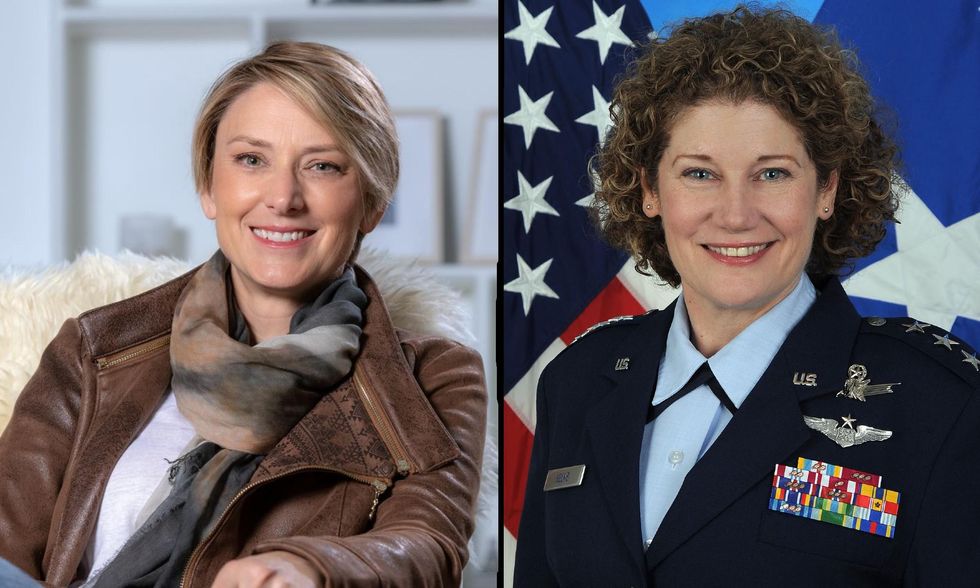Twenty Years Ago Today, NASA First Sent a Woman to the ISS. Here’s What She Sees for Future Missions.
Samson Amore is a reporter for dot.LA. He holds a degree in journalism from Emerson College. Send tips or pitches to samsonamore@dot.la and find him on Twitter @Samsonamore.

Twenty years ago today Lt. Gen. Susan Helms arrived at the International Space Station where she would go on to carry out a historic mission.
During a five-month stint at the station, she emerged to take a spacewalk with fellow astronaut Jim Voss that spanned nearly nine hours, breaking world records for both the longest spacewalk ever and the longest completed by a woman.
Since then, she's been on another mission to inspire a new generation of aerospace pioneers and help them build their own legacy.
Melanie Stricklan co-founder and CEO of El Segundo-based Slingshot Aerospace, credits Helms with helping launch the startup that counts NASA among its clients. To date, the company has raised over $17 million from investors including L.A.-based Stage Venture Partners and Noname Ventures. And Helms' guidance and insight has been key to that.
"She is a pioneer. She made way for lots of other women to go to service academies and after that to pursue engineering degrees like she did," Stricklan told dot.LA. "She was the first military woman in space; the first woman to inhabit the ISS."

Stricklan, who was an Air Force military officer for over two decades before she took her degree in aeronautical space engineering to found Slingshot Aerospace in 2017, met Helms when she was Stricklan's superior in the service.
Helms' mentorship has helped Stricklan and Slingshot secure contracts from NASA, the U.S. Space Force and Air Force, as well as private contractors like Boeing, Northrop Grumman and BAE Systems.
But Helms also boosted Stricklan's confidence as she helped develop Slingshot Aerospace.
The company sells two products. Slingshot Laboratory is a mixed-reality space simulation training tool that can be used by NASA astronauts and K-12 students. Although it's still in beta mode, it's being used to train university students and the Space Force Guardians.
Then there's Slingshot Orbital, an air traffic control-like system for space travel. The system gives the government a more accurate idea of exactly what's going on up there, without having to actually send more crafts into space. Helms talks about Slingshot as if she's making a pitch for her own company. Slingshot Orbital, she said, is key to protecting the U.S. from foreign threats in space as access to the stars becomes more democratized.
"Space has now become so accessible, you have to start thinking of it as a place where conflict could take place," Helms said. "Therefore, you have to focus on it with resources and defensive strategies."
Both point out that every launch produces debris, and even an accidental collision with another country's tech could have disastrous consequences.
"Space is one of the most critical environments to make accurate decisions in, especially with all of the hundreds of new satellites increasingly filling orbits," Stricklan said. "(There's) millions of pieces of debris... It's not a hair-on-fire moment, space is big."
Both have been working in the industry to help the next generation of women in space
"We're no longer hitchhiking on Russian rockets, which I love," Stricklan said. "I love the fact that women are leading the charge," Stricklan said.
Most major aerospace firms now have a woman in their C-suite — Leanne Caret is the CEO of Boeing Defense, Space and Security; and Marilyn Hewson ran Lockheed Martin for seven years until June 2020.
"Elon gets a lot of credit for what SpaceX is doing but [its CEO] Gwynne Shotwell is terrific. When we got our ticket back as a U.S. entity to go into space on the first privatized ride, she helped Elon get there," Stricklan said.
In 2019, 75% of all the major science divisions in NASA were run by women, the organization said. This includes Sandra Cauffman, a Costa Rican-born engineer who was the first woman to be appointed to the NASA Inventions and Contributions Board in 1994.
Helms now serves as the vice president of Texas-based Astra Femina, a nonprofit dedicated to encouraging young women to pursue careers in space. Astra Femina was founded by Sandra Magnus, a former Department of Defense chief engineer and one of the few astronauts to fly on the final Space Shuttle mission in 2011.
"Some of them have to just see it to be it," Stricklan said about young women interested in the field.
Helms won't be satisfied until there's finally a woman who sets foot on the moon.
"The astronaut office was 25% female when I showed up," Helms said. "What I'm looking for are the days when it's 50/50. There's people that say, why go back to the moon if we've already been there, and my answer is well, only 50% of you have been there. When you talk about human exploration, you're talking about humans in general."
The anniversary has her feeling nostalgic.
"I'm feeling kind of sad that the spacecraft I flew on that day isn't around anymore," Helms said. " I usually don't think about the anniversary that much, but since it's the 20 year anniversary and it sets us on International Women's Day in particular, it seems especially poignant."
- Slingshot Aerospace, The Third Floor Work with Space Force - dot.LA ›
- Slingshot Aerospace's Melanie Stricklan on 'Female Founders ... ›
- Slingshot Aerospace Melanie Stricklan on Aerospace's Future - dot.LA ›
- Red 6 Raises $30M for Military Training in Augmented Reality - dot.LA ›
Samson Amore is a reporter for dot.LA. He holds a degree in journalism from Emerson College. Send tips or pitches to samsonamore@dot.la and find him on Twitter @Samsonamore.




